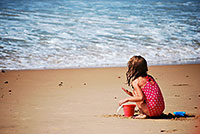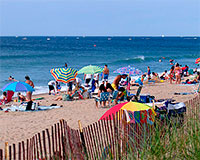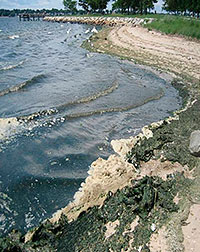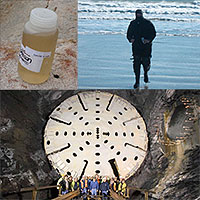Website content other than annual reports last updated May 31, 2013.

Beach Closures
Learn More!
- Beach Data 2012
- Beach Data 2011
- Beach Data 2010
- RI DOH Beach Monitoring Program
- State Water Interactive Map (SWIM Viewer)
Volunteer Beach Monitoring:
Data Source:
Posters:
- 2013 Assessment Poster (pdf)
- 2011 Assessment Poster (pdf)
The Rhode Island Department of Health is responsible for the Beach Water Quality Monitoring Program.
Rhode Islanders cherish their personal relationship with the shore, and beach visitors from near and far are an important part of the region’s tourism economy. Beach closures reduce our quality of life and affect tourism. Closures are closely linked to rainfall as storm water runoff is a significant source of bacteria to many beaches. Sources of bacteria include discharges of raw sewage from combined sewer overflows (CSOs), failing septic systems, cesspools, and wild and domestic animals.
Since 2001 Rhode Island beaches have received over 2 million dollars in federal money driving over 10 million dollars in remediation by the cities, towns, and private beach owners. This does not include the extraordinary contributions of state and federal resources to the Providence CSO tunnel project. At the time of this writing, federal funds will no longer be allocated for saltwater beach sampling, starting with the 2013 bathing season. Currently, there are funds available to support the 2013 and 2014 monitoring seasons for licensed saltwater beaches. Beyond that time, funding sources are currently unknown.
The work to reduce stormwater and wastewater impacts and improve water quality at Rhode Island beaches has resulted in a significant decrease in beach closures since 2006. In the past three years we see a trend that shows less correlation between beach closures and rainfall.
Bay and Ocean Beaches: 2011 Assessment
Status and Trends: Our beaches are improving, but we still have beaches with water quality problems. Most of our beaches closures (80%) occur at only a few of the state’s licensed beaches (10%). This means Rhode Island has over 100 licensed facilities that are open daily during the summer and are not affected by bacterial contamination.
Management: We are doing a good job monitoring our beaches and we are progressively addressing storm water and sewer connections. Continued investment in monitoring allows us to find and eliminate the sources of contamination. Additional source identification and remediation will result in more open beach days for the public and the capacity to accommodate our important tourism population.
Bay and Ocean Beaches: 2013 Assessment
Status and Trends: During the 2012 bathing season there were 29 beach closure events, as compared to 37 in 2011 and 45 in 2010. 25% of the licensed saltwater beaches were closed at least once during the 2012 season. Greenwich Bay and upper Narragansett Bay have shown decreases in beach closures from 2011, whereas Newport/Middletown closures were higher in 2012 as compared to 2011.
Management: Since 2009, the correlation between precipitation and beach closures has declined, reflecting improved stormwater and wastewater management. During the 2012 beach season emphasis was placed on assisting beach facilities with remediation efforts, including treatment systems and green infrastructure. We are progressively addressing storm water and sewer connections. Continued investment in monitoring allows us to find and eliminate the sources of contamination. Of special concern is the impending loss of federal funding, which has covered 100% of the beach monitoring program.
How Rhode Island Beaches are Monitored for Health Concerns
Saltwater beaches are sampled regularly for the bacteria Enterococcus, an indicator of the presence of disease-causing organisms. The RI standard for Enterococci is 104 per 100ml of saltwater. Any sample that is above the state standard is considered unsafe for swimming. Once a beach violates state criteria, referred to here as a closure event, it remains closed until new samples indicate that conditions have improved. Although a beach closure event is prompted by a violation of the state standard, the number of days a beach remains closed is dependent on not only water quality, but also on the availability of other resources. The data presented here was collected at regularly monitored saltwater beaches in Rhode Island between Memorial Day and Labor Day. There are no saltwater beaches in the Massachusetts portion of the Narragansett Bay watershed. Closure events are strongly influenced by the duration and intensity of precipitation events.
Significance: Enterococci are bacteria that come from the intestines of all warm-blooded animals. When sewage is present in the water, enterococci will also be present. In addition to enterococci, many other water-borne pathogens may also be present in untreated sewage. Sources of bacteria include discharges of raw sewage from combined sewer overflows (CSOs), failing septic systems, cesspools, and wild and domestic animals. These pathogens can cause a wide range of health problems including ear, nose, and throat problems, gastroenteritis, dysentery, hepatitis, and respiratory illness. Because there are so many other potential pathogens and testing for all of them is not feasible, enterococci is used as an indicator of the potential presence of these pathogens. Enterococcus is a better indicator of the risk of illness than fecal coliform, which has been used in the past.
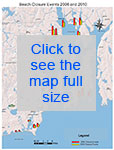
Beach closure events in 2006 and 2010 for specific beaches.
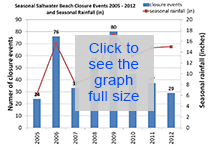
Beach closure events declined between 2011 and 2012, continuing a trend that started in 2009. In the past, beach closures were strongly correlated to rainfall. Since 2010, this relationship has decreased.
Workshop Documents (in Adobe Acrobat format)
October 27, 2011 Meeting Documents
- Agenda
- Summary Report
- Presentation: Beach Program presentation by Lauren Russo, Beach Program Assistant, the Rhode Island Department of Health
October 12, 2010 Workshop Documents
- Agenda
- Summary Report
- Presentation: Beach Closure as an indicator used by other NEPs by Lesley Lambert (NBEP)
- Presentation: RIDOH Beach Program by Amie Parris (RIDOH)
- Presentation: Volunteer Beach Monitoring by Lauren Russo (RIDOH)
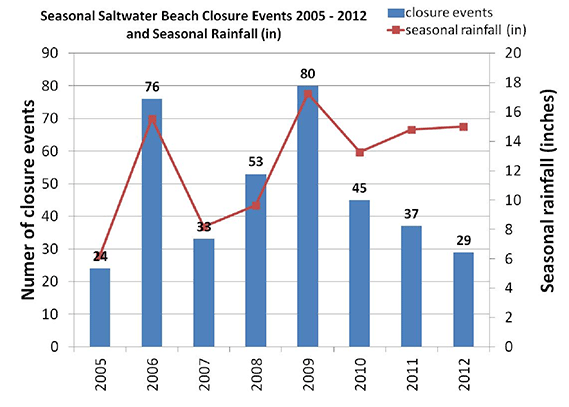
Data: RI Department of Health, Beach Monitoring Program
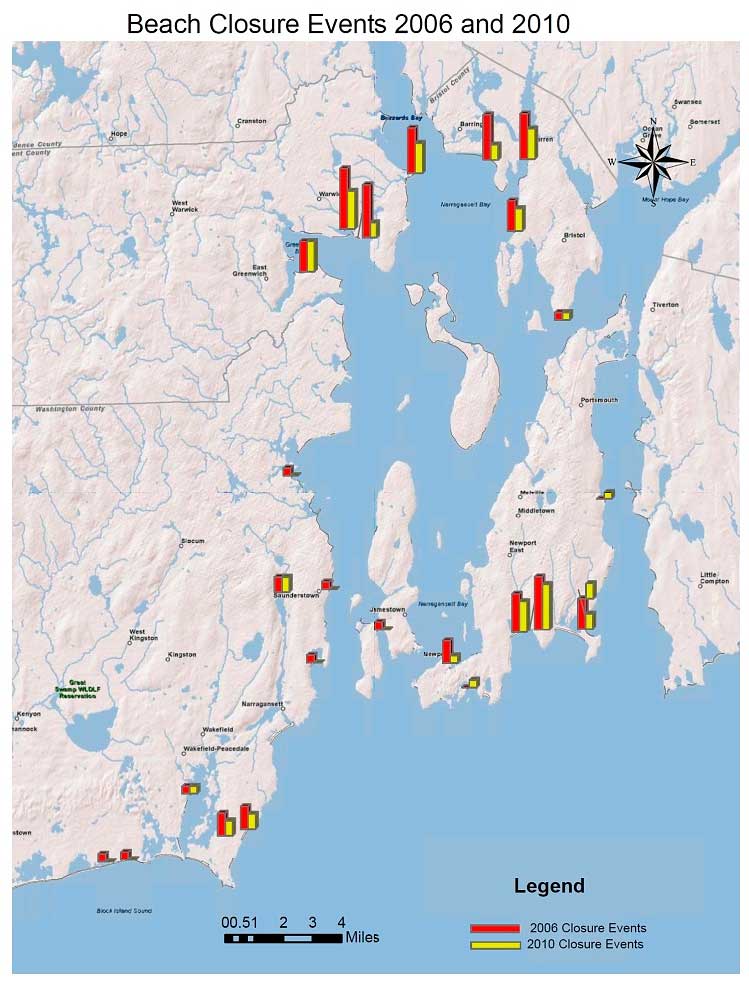
Data: RI Department of Health, Beach Monitoring Program
